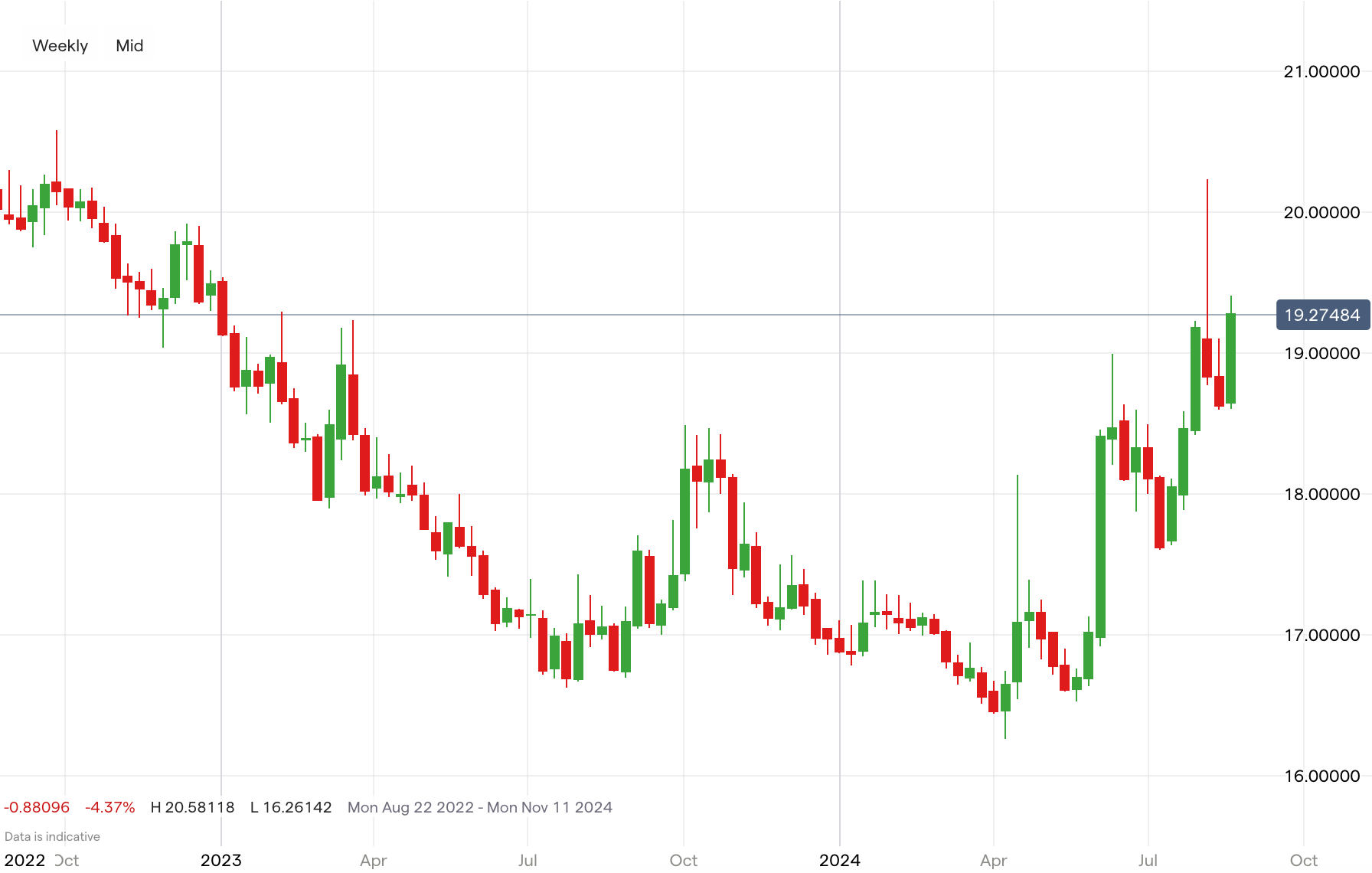USD/MXN price analysis: dollar-peso nears 20.000 on recession fear
The USD/MXN pair has risen past 19.000 due to risk-off sentiment in forex markets. Potential changes in Mexican interest rates and the impact of a US recession on Mexico's economy could further influence this pair.

Key points
- USD/MXN has surged past the 19.000 mark due to risk-off sentiment in forex markets
- Bank of Mexico's interest rates could drop from over 10%, potentially weakening the peso
- A US recession could significantly impact Mexico's economy, affecting the USD/MXN pair
- USD/MXN has not consistently traded above 19.500 since 2022, with historical peaks during the pandemic exceeding 25.000
USD/MXN surges past 19.000
The USD/MXN pair has soared past the 19.000 mark as the dollar rallies against the risk-on Mexican peso currency. This movement is influenced by the prevailing risk-off sentiment in forex markets. While the USD has gained against the peso, it has simultaneously depreciated against flight-to-quality currencies like the Japanese yen and Swiss franc.
Mexican interest rates could tumble from 11%
The Bank of Mexico had previously hiked interest rates to over 10%, reflecting Mexican economic strength post-pandemic and coinciding with historic downside movements in the USD/MXN pair. Higher interest rates generally attract investors seeking better returns, thus strengthening the currency. A potential tumble from these high rates could lead to a depreciation of the peso, impacting the USD/MXN pair significantly.How would a US recession affect Mexico?
The Mexican economy has benefited from near-shoring effects due to US economic growth post-pandemic; however, a US recession would likely hamper Mexico's economic performance as well. The interconnected nature of the US and Mexican economies means that downturns in one can lead to downturns in the other, possibly affecting the Mexican economy more severely.Where next for USD/MXN?
The USD/MXN pair has not consistently traded above the 19.500 level since 2022. During the initial phase of the pandemic in 2020, USD/MXN traded above 25.000 due to heightened risk-off sentiment. Historical trends suggest that significant economic events can lead to substantial fluctuations in this pair.How to trade USD/MXN
- Open an account to get started, or practice on a demo account
- Choose your forex trading platform
- Open, monitor, and close positions on USD/MXN
Trading forex requires an account with a forex provider like tastyfx. Many traders also watch major forex pairs like EUR/USD and USD/JPY for potential opportunities based on economic events such as inflation releases or interest rate decisions. Economic events can produce more volatility for forex pairs, which can mean greater potential profits and losses as risks can increase at these times.
You can help develop your forex trading strategies using resources like tastyfx’s YouTube channel. Our curated playlists can help you stay up to date on current markets and understanding key terms. Once your strategy is developed, you can follow the above steps to opening an account and getting started trading forex.
Your profit or loss is calculated according to your full position size. Leverage will magnify both your profits and losses. It’s important to manage your risks carefully as losses can exceed your deposit. Ensure you understand the risks and benefits associated with trading leveraged products before you start trading with them. Trade using money you’re comfortable losing.
